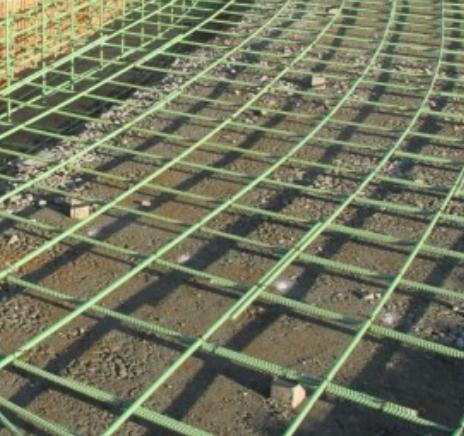Black cotton soil is a expansive clay type soil. The behavior of this soil has discussed in previous many posts with its molecular structure. This soil is well known in India as every year many structures settled or suffered distress of any type due to expansive potential of this soil.
In United States this scenario is almost same. We have published many post regarding foundation problem and its repair options in United States. We are providing a figure regarding distribution of vertisol (expansive soil) in North America.
This is important fact that the destruction of buildings, pipelines and roads due to this expansive soil is more than twice that from combined destruction by tornadoes, hurricanes, floods and earthquakes.
Now we are going to describe repair method for such types of destruction to a particular foundation type. Here we will discuss about slab-on-grade foundation.
At first we will have a brief idea about slab on grade foundation. Slab on grade is a foundation that is poured on grade to serve as foundation for a structure. It is sometimes used as building floor. This slab may be reinforced or unreinforced. It depends on thickness and service load of the structure. It may rest on piles or piers, grade beams or any sort of supports.
Our concern is unreinforced or insufficient reinforced slab. Slab that support on other type of deep support is not considered here. This is due to they are less susceptible to be impacted by detrimental effect of black cotton soil.
Now we will go to the main topics-the way of repair. The slab that have distressed either by shrinkage or heaving effect of black cotton soil is recommended to repair with structural slab. Now we will learn about how we can do this.
We are not mentioning that structural slab is the only option. But it is the most common solution for black cotton soil related distortion to slab-on-grade foundation. In one word, the existing distorted slab is removed and replaced with structural slab.
Now what is structural slab? This is nothing but a slab having extra thickness and adequately reinforced for rendering moment resistance for expansive soil related movement.
We have mentioned that structural slab can be provided in replacement of unreinforced, not supported on firm foundation component or less thickened slab-on-grade foundations, as a foundation repair option for problem soil, black cotton soil.
How a structural slab is designed, depends on foundation engineer. In many cases, we have found that engineers are providing a thickness of five/six inches having steel reinforcement.
Regarding reinforcement 12 mm reinforcing bars (no.4 bars) are provided with a spacing of 450mm to 600mm center to center, and off course in both directions. We have mentioned earlier that this a typical or more accurately usual structural slab detailing and provided thickness.
Depending on load of structure, purpose of use of slab, geotechnical condition (off course expansive property of black cotton soil is considered), designer may vary the detailing and thickness.
Slab-on-grade foundation may rest on shallow or deep component of foundation systems. There may be a load bearing footing below a slab and sometimes it is expected to remain this component. For these purpose a concrete saw is used to cut the slab. Our aim is to leave the narrow weak slab just over the support provided by load bearing wall. It (the support) may be some sort of grade beam.
As mentioned earlier, the narrow and weak slab should be cut along the side of support say load bearing wall or grade beam or other means of support. Now we have isolated this narrow slab on the support from the unsupported narrow one. This is the time to provide new structural slab as repair option of distressed slab-on-grade foundation.
Every new work should have a proper connection with older one. Now we will learn how we will do this. We will provide a means of connection named “rebar dowel” to the remaining older one. Now do we know what is rebar dowel.
In the process of rebar doweling, horizontal holes are drilled through vertical face of old remaining concrete and pieces of rears, glued with epoxy are penetrated. In drilling purpose hammer drill or roto-hammer is used. In the next post we will have idea about drilling size and depth requirements and also economical fact of this method of slab-on-grade foundation repair.
The manufacturer of epoxy will provide hole size and penetration depth for rebar of particular size. We will provide some epoxy products from different manufacturers for applying rebar dowels in next post.
Now we will consider the economy of this repair process. In some cases, the severity of problem due to expansive soil, governs the way of repair method. If the depth of black cotton soil is relatively small, it is wise to remove it and backfilled with non-expansive soil.
We have published a post about fill material as a replacement of this problem soil. Foundation engineers have to consider this economical fact. But when the large depth of replacement produces huge cost involvement, structural slab is better option.
Mud jacking is also a method of repair for such problems. But mud jacking may involve grout losses for many reasons. Regarding grout losses during mud jacking as discussed earlier, some methods of containment of grout have to use. These containments involve further cost involvement. So the economy depends on geological and geotechnical conditions of the foundation sites.







Thanks for sharing this post to us. This adds more info and knowledge about foundation repair problems. This will be helpful for homeowners.
ReplyDelete